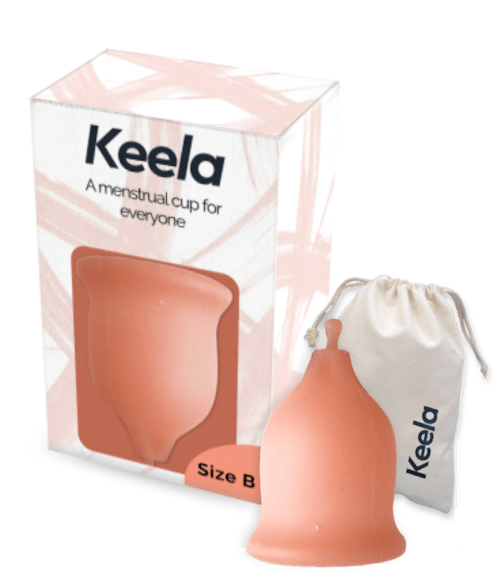Life
This Woman Designed A Menstrual Cup That’s As Easy To Use As A Tampon & It Rules
Periods can be grueling, messy, and just a plain, downright bummer. From tampons and pads, to menstrual cups and period panties, all of us menstruate are constantly on the search for period products that provide us with the most comfort and, also importantly, the least amount of hassle. Keela Cup menstrual cup works like a tampon to make it easier to use, and its innovative design is changing the game for period products — especially for people with disabilities.
“I hope that Keela can expand access to [menstrual] cup use for more people,” Jane Hartman Adamé, the creator of Keela Cup, tells Bustle. “As a person with a disability, I am frequently limited by the products I can use, which inhibits me from making the choices I want for my body. I hope the Keela Cupcan break down this barrier for even more folks.”
Most menstrual cups are inserted in the vagina by folding them, and once fully inserted, they open up to create a suction cup-like seal. This is what holds the cups in place and, crucially, prevents leakage. Most everyone experiences a learning curve when switching to menstrual cups from tampons or pads, which can cause side effects such as irritation, infection, and temporary cramping. Menstrual cups have been touted as one the easiest and environmentally-friendly menstrual products, however, this is not always the case for disabled people. Often times, disabled people can have their chronic illnesses exacerbated by the period products. Some people with disabilities even have to forego using menstrual cups altogether because the so-called “hassle-free” products become unmanageable.
Enter: Keela Cups, an inclusive menstrual product that was created with disabled people in mind first and foremost — not as an afterthought. Adamé, who describes herself as “Hairdresser-turned-inventor” on Twitter, explained in an op-ed for Teen Vogue she designed the Keela Cup because her experience living with Ehlers-Danlos Syndrome (EDS) — a connective tissue disorder that cause joint instability and immobility — kept her from being able to use traditional menstrual cups. “[Having Ehlers-Danlos Syndrome] means that when I do something like change out my menstrual cup, I can dislocate a finger, a shoulder, a hip, or something in my back. Not just can — I have done all of the above,” wrote Adamé. “I stopped using cups for a while, and it really bummed me out. I didn’t want to send more tampons and pads into the landfill, but I had to prioritize my own body over the planet. That is not a fun choice to make.”
So, how does a Keela Cup differ from a traditionally-designed cup anyways? Adamé enlisted the help of her friend Andy, an experienced medical device inventor, to design a cup that has a string users can pull to easily remove the cup (yes, like a tampon!), rather than manually inserting your fingers to dislodge the seal. Through a video and series of handy instructional photos of Keela Cup’s Kickstarter page, Adamé shows just how easy to use the Keela Cup is. The patented pullstring’s length can be adjusted from short to long, customized to the user’s individual needs and preferences. In addition to the pullstring feature, the Keela Cup has a rounded lip, is made from medical grade silicone and soft coating to provide users with maximum comfort, and comes in two sizes. The Keela Cup can even be used just like a regular suctioning menstrual cup still (if the user prefers), thanks to simple air equalization holes incorporated into Adamé’s design.
The Keela Cup is making menstruation products more accessible for disabled people, and thus, helping ensure their bodily autonomy and basic human rights. Disabled people who menstruate constantly deal with ableism in regards to their periods. This is why designing inclusive products, like the Keela Cup, is vital to improving the overall quality of life for disabled people around the world.
According to the Keela Cup Kickstarter page, the inventors still need to raise close to $30,000 dollars to reach the campaign’s $50,000 goal. They are planning to have the first small batch of Keela Cups shipped out in May 2018, and plan to have the product nationally launched in June 2018 if they can reach their Kickstarter goal that has sixteen days to go (ahem, pledge here).
Additionally, Adamé tells Bustle her and Andy “are definitely planning to make more than just menstrual cups,” and want to patent even more inclusive products. She explains, “Beyond just disability-friendly design, we also hope to address anatomical differences to provide more options for more people in the realm of menstrual cups and beyond. We have had lots of ideas suggested to us, and we are keeping note of all of them.”
Creating products that cater to the needs of disabled people isn’t a luxury or a privilege, but a basic human right. Everyone has their personal preferences when it comes to period products, but no individual — or entire marginalized community — should feel like they don’t have an option.
